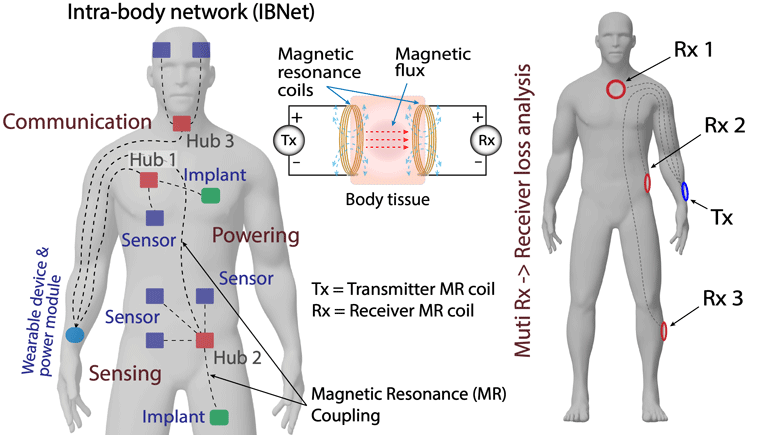
Spurred by the advances in ultra-low-power electronics and communications, emerging implantable medical devices have led to new insights into long-term and continuous healthcare monitoring. For effective management of such medical devices, the intrabody network (IBNet) is becoming increasingly important. However, traditional means of intra-body communication (e.g., galvanic, capacitive, RF) are often affected by significant path loss due to tissue absorption, shadowing effect, environmental variations, instability of transmission quality, grounding issues, antenna size, etc. In pursuit of more suitable technology for the IBNet, the magnetic resonance (MR) coupling arose a great interest in the community since the magnetic permeability of the biological tissue is similar to that of the air, absence of an external reference or ground, and near-field operation.
In this paper, we present magnetic resonance (MR) coupling as a promising method for the intra-body network (IBNet). With seven healthy human subjects, we systematically compared MR coupling to traditional intra-body communication methods (galvanic, capacitive, and RF). The study revealed that MR coupling could effectively send or receive signals (power/data) in biological tissue, with a maximum path loss (PL) less than 33 dB (i.e., at 13.56 MHz). Such path loss was lower than galvanic, capacitive, or RF couplings for the same distance. The angular orientation between the transmitter and the receiver coils showed minor variation in the path loss (0.19 ≤ ∆PL ≤ 0.62 dB) but observed some dependency on the distance (0.05 dB/cm). Different postures during the MR coupling essentially did not affect performance (∆PL ≤ 0.21 dB). The multi-nodal transmission between a single transmitter and multiple receivers showed that the signal could be simultaneously delivered, demonstrating a potential for communication, sensing, and powering wearable and implantable devices. Overall, the MR coupling conserves energy for long-term implants by enabling low-power communication at lower path loss in the human body.
